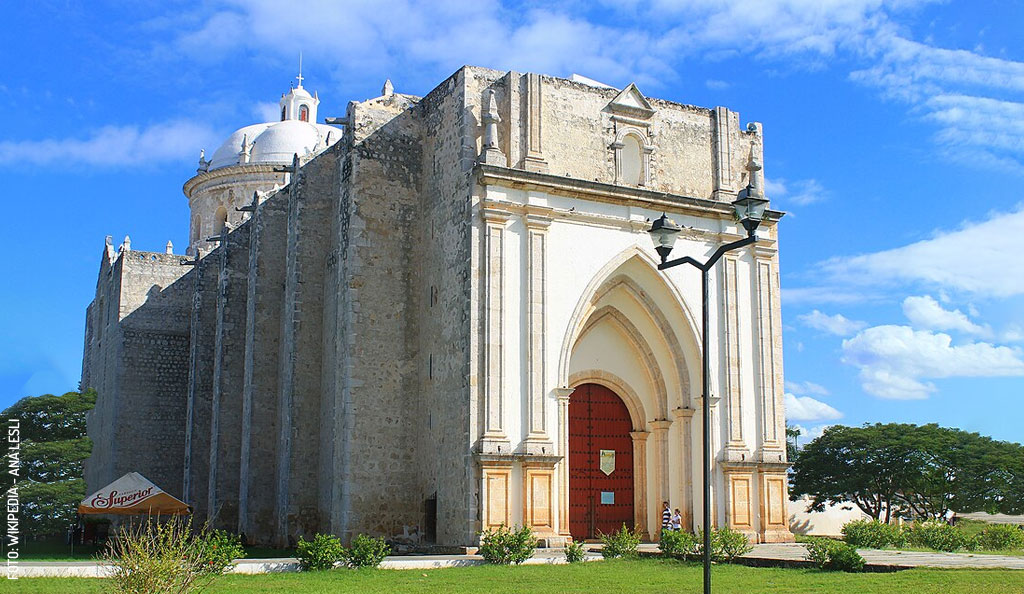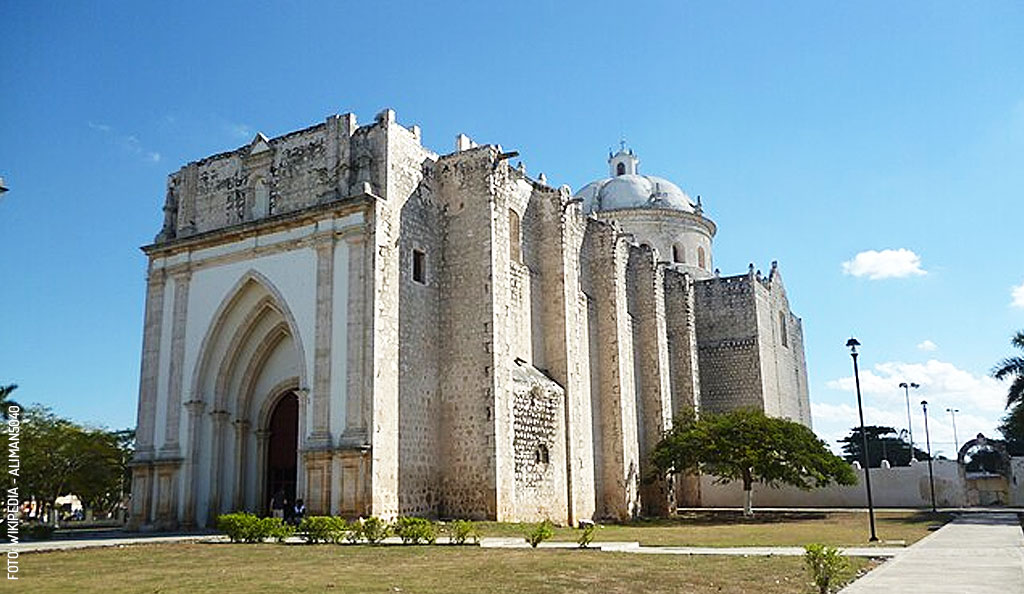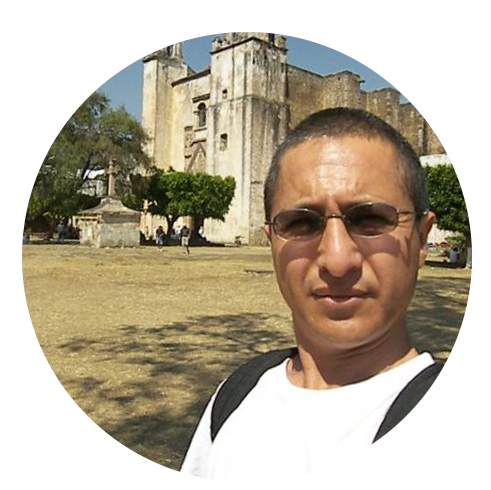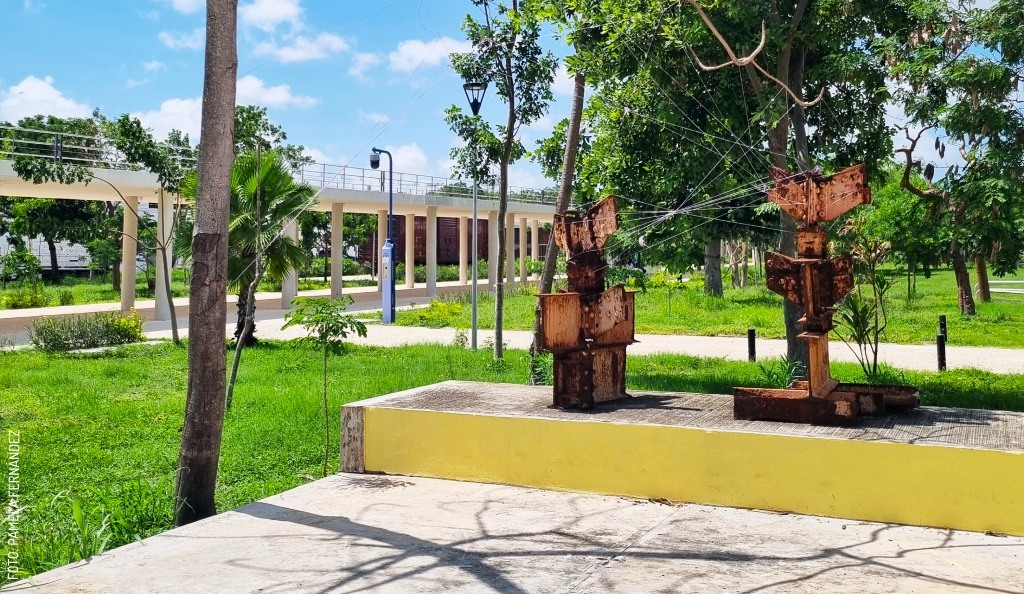
Umán’s “Unfinished One”: The Mystery of the Parish of Saint Francis of Assisi
Its personality is… strange. How can I put it? It has something odd, a certain je ne sais quoi that draws the eye. Its appearance is so unusual that it’s earned the nickname “La Inconclusa (the Unfinished One).” And before the gossip starts, let me clarify: I’m talking about a church — the Parish of Saint Francis of Assisi.
Located about 18 kilometers south of Mérida, in the town of Umán, the church dominates the landscape from the town center, flanked by the Municipal Palace, the local market, and the main square. The building is massive, as if it were meant to be a cathedral. And here lies the core of the mystery: the obvious absences. Where are the bell towers typically found on churches? Well… there are none. And the reason isn’t war or natural disaster, but rather a very human — and persistent — streak of bad luck.
The story behind Umán’s “Unfinished One”
But first, a little context: the site has been occupied by Franciscan friars since 1579, when they built a chapel for Indigenous peoples and, years later, a convent that has since disappeared. This location took advantage of Umán’s spot on the Royal Road to Campeche — a key colonial route that connected Mérida to the port of Campeche. However, the Franciscan hold on the site was short-lived; a century later, the temple passed into secular hands.
It’s important to remember that the first churches often had thatched roofs, and at that time, the Parish of Saint Francis of Assisi had this exact appearance. Eventually, as part of an improvement program, it was selected to be rebuilt as a stone masonry temple.

What “The Unfinished One” was supposed to look like
The current church began construction in the late 18th century, and it has looked pretty much the same ever since. According to blueprints kept in the General Archive of the Indies in Spain, the current façade represents only half of what was planned — it’s missing much of a second tier and the entire bell tower. That missing tower is especially interesting. Picture it: unlike most churches in the Yucatán Península, which typically have espadañas (arched openings for bells) and at least two towers, the Parish of Saint Francis of Assisi was designed with a single, three-tiered central tower. This would have given it a unique look — like a stone unicorn rising from the center.
On top of that, the three pointed arches on the main façade add a Gothic flair, flanked by double columns with classical inspiration, a striking blend of styles that adds to its exotic appeal. In contrast, the interior is wide and simple, crowned by a massive dome that feels disproportionate to the slender façade.
The design is attributed to Juan de Torres, an architect active in the early 19th century who also designed the Saint Christopher church in Mérida. At first, construction progressed well, but the Mexican War of Independence, the political unrest that followed, and the expulsion of the Franciscans under México’s Reform Laws brought it all to a halt. The church was left incomplete. Unfinished. And to top it off, in the 1920s, part of the old convent was demolished to open a new road. The rest of the land was repurposed; for example, today a softball field occupies what used to be the convent’s orchard.
Umán, a stop on the Royal Road from Mérida to Campeche
The Franciscans’ bet on this town was more than justified. Over time, merchants, friars, viceroys, armies, locals, pilgrims, farmers, revolutionaries, and adventurers all passed through here. Among them were none other than Empress Carlota and explorer John Lloyd Stephens, who documented his visit to Umán in his 19th-century travel book “Incidents of Travel in Yucatán,” the work that rekindled interest in the region’s pre-Hispanic past for a global audience.
At this point, it’s hard to imagine “The Unfinished One,” the affectionate nickname for the Parish of Saint Francis of Assisi in Umán, ever being completed. And yet, what is there is more than enough to impress curious travelers.
First published in Yucatán Today print and digital magazine no. 453, in September 2025.

Author: Alberto Chuc
I like to travel through books and in the real world, activities that I combine whenever I can.
In love with Yucatán? Get the best of Yucatán Today in your email.
Don't miss our best articles and the monthly digital edition before anyone else.
Related articles

The UNAY, Yucatán University of Arts, a Stronghold of Artistic Expression
The Old Mérida Railroad Station, now the Universidad de las Artes de Yucatán, an iconic building for Yucatecan culture and expression.
Discover Maxcanú’s White Gold at the Jicama Festival
Discover the unique charm of Maxcanú's White Gold at the Jicama Festival in Yucatán, showcasing local jicama producers and their traditional...




